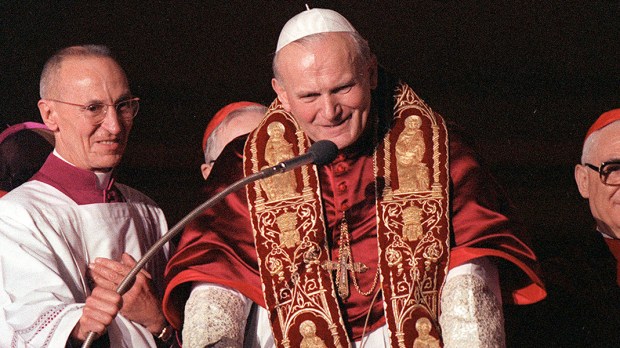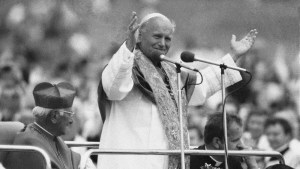In 1978 a second papal conclave was held from October 14 – 16, during which a Polish cardinal, Karol Wojtyla, was elected pope.
While many Catholics are familiar with October 16 being the feast of St. Margaret Mary Alacoque, in certain parts of Poland it is better known as the feast of St. Hedwig of Silesia.
Hedwig was a member of Polish nobility. She was canonized by the Catholic Church in 1267.
St. John Paul II made a pilgrimage in 1979 to Poland, where he celebrated a special Mass for pilgrims from Silesia.
St. Hedwig and St. John Paul II’s election
In his homily, St. John Paul II made a specific reference to the providential day of his election:
In its inscrutable designs Divine Providence chose October 16, 1978 as a turning point in my life. On October 16 the Church in Poland celebrates St, Hedwig, and for that reason I feel specially bound to make this votive offering today to the Church in Poland for the saint who, as well as being the patroness of reconciliation between the neighboring countries, is also the saint honored on the day of the election of the first Pole to the Chair of Peter.
He also mentioned how his election participates in “the long history of human events and works of divine Providence connected with Trzebnica and all your region.”
Throughout his homily St. John Paul II returned to the theme of unity among nations. This was during the Communist rule in Poland and at a time in the world when there was a great amount of tension in the world before the Berlin Wall was torn down.
He ended his homily again desiring to highlight unity, of which St. Hedwig was an example.
I wish to recommend to the Mother of God in Jasna Góra reconciliation between the nations, of which reconciliation we see one mediating in the figure of St. Hedwig. As inward unity within each society or community, whether a nation or a family, depends on respect for the rights of each of its members, so international reconciliation depends on recognition of and respect for the rights of each nation. Chief of these are the rights to existence and self-determination, to its own culture and the many forms of developing it.
St. John Paul II’s final words echoed his hope for his entire pontificate, “May this Pope who is today speaking here on the height of Jasna Góra effectively serve the cause of unity and reconciliation in the modern world. In this task keep assisting him with your prayers throughout the land of Poland.”
Looking back at St. John Paul II’s legacy, unity certainly was a common theme that he worked for until his last breath.



